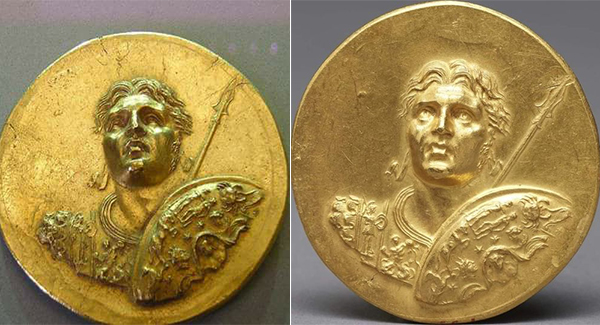A golden medallion with Alexander the Great, dated to the first half of the 3rd century AD. Following information from the Walters Art Museum of Boston: “This particular medallion shows Alexander the Great gazing heavenward and bearing a shield decorated with signs of the zodiac. This portrait shows him with his hair pulled back. He wears a decorated cuirass with a figure of Athena on the shoulder strap and, on the chest, a scene from the Gigantomachy (War of the Giants). The back depicts Alexander and Nike, goddess of victory, riding in a chariot, flanked by the deities Roma and Mars.

This piece was discovered in Egypt as part of a hoard that comprised about twenty similar medallions (now dispersed among various museums), eighteen gold ingots, and six hundred gold coins issued by Roman emperors from Severus Alexander (r. AD 222-235) to Constantius I (r. AD 293-306).

One of the medallions, now in the Calouste Gulbenkian Museum in Lisbon, bears an inscription that possibly reads “Olympic games of the year 274″, a date corresponding to AD 242-243. It is possible that the medallions were intended as prizes to be given out at that event. Alternatively, they may have been issued by Emperor Caracalla (r. AD 198-217), who is potrayed on some of them. Caracalla liked to be compared to the great king and conquerror Alexander.”


